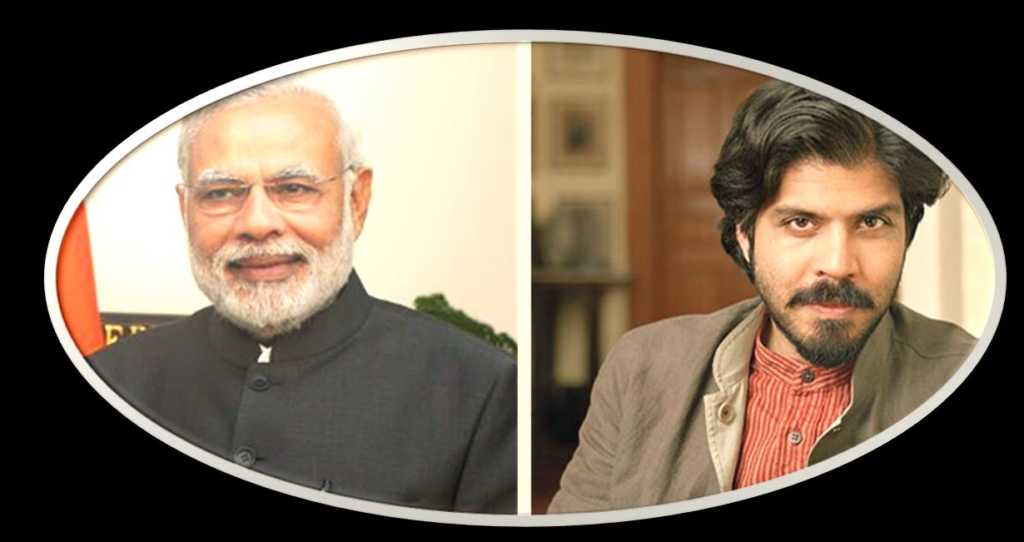Mainstream media works in devious ways. For instance, a plain fact such as ‘Narendra Modi is the Prime Minister of India’ can be represented as ‘Hindu nationalist Narendra Modi is the Prime Minister of India’ or ‘2002 Gujarat riots mastermind, Narendra Modi is the Prime Minister of India’ or ‘Narendra Modi, belonging to fascist Hindu RSS, is the Prime Minister of India’ and so on.
Generally speaking, Indians, with the advent of Social Media, have been able to read between the lines and ignore the ideological and personal biases that so-called Journalists venomously spit into their writings or TV shows.
There is also the obvious fact that people voted Narendra Modi and BJP into power, which they wouldn’t have done had they shared the opinions of Mainstream Journalists. Thus, increasingly while TRPs of Rajdeeps and Barkhas have been collapsing, while many have begun to do a Ghar wapsi to Doordarshan. The stellar take-off of Arnab’s Republic TV also reflects the exhaustion of the masses with sold-out Mainstream Media.
That having been said, it is worthwhile to note that Mainstream Media plays a big negative role in painting India’s image before foreign audiences.
Unlike Indians living in India, foreigners can make up an image of India only by the news reports that are fed to them. Given our Mainstream Media’s penchant to cover the menace of Gau-rakshaks more than the coverage of South-Asian satellite, it is but obvious that foreigners would continue to perceive India as a land wracked with strife and violence.
While Chinese Media spares no opportunity to lambast India and its other enemies over territorial and other issues, Indian Media is frequently seen giving space to the likes of Prashant Bhushan and Arundhati Roy, who would rather have a million mutinies now to fragment the country.
Even on an issue as sensitive as Kashmir, Indian media frequently positions the country on the wrong side of the argument, giving credence, thereby to the whole ‘Kashmir is disputed’ debate. Instead of a united, common voice going out to the world, India finds itself painted in conflicting shades by people using different ideological brushes.
Pankaj Mishra typifies this creed of journalists, who like a swarm of locusts, have denuded India before foreign audiences. In his piece on Narendra Modi for The 100 most influential people for Time Magazine, Pankaj Mishra introduces Modi as someone who was ‘once barred from visiting the US because of his complicity in anti-Muslim violence…’
While the first half of the sentence is true, the second half has been set aside by none other than the Supreme Court of India. Perhaps blinded by his hatred for Modi, Pankaj Mishra chooses not to mention this unquestionable fact.
Moving on, he describes Modi as a ‘Hindu Nationalist’ and goes on to say ‘his extended family of Hindu nationalists have taken to scapegoating secular and liberal intellectuals as well as poor Muslims’. What has been quoted is not a fact. It is merely the opinion of somebody who hates Modi.
The term Hindu nationalist has been used pejoratively and deliberately before a Western audience who would be quick to note it as cultural fascism and Islamophobia, and would, therefore, be less likely to take a liking in Modi.
Surprisingly, as Francois Gautier points out, Sonia Gandhi has never been referred to as ‘ Chauvinistic Christian Hinduphobe’ by the same Media which is quick to harp on Modi’s Hindu-nationalist credentials.
Pankaj Mishra continues to revile Modi as someone who ‘playing on the existential fears and cultural insecurities of people’. Far from being a tribute to a person who made it to the List of 100 most influential people, Pankaj’s piece is an insult to the intelligence of the Indian electorate and a damning account of his personal and ideological preferences.
This is not the only time Pankaj Mishra has exploited his readership in foreign journals to spew venom against Modi and India. In an article he wrote for NYT, he exposes his cultural dhimmitude by claiming that India’s reputation as a ‘Golden bird’ took hold during the centuries of its enslavement by the Muslims and the British.
He paints ‘Hindu-nationalists’ as vengeful, wanting to promote ‘religious-racial’ supremacy. He slams the RSS, compares India with Japan before World War II and paints a grim picture of the nation ruled by a Hindu despot.
Words such as racist, xenophobe, irrational etc. are used liberally to demonise Modi and his supporters. Any foreigner reading the article cannot be blamed for believing that India is a country that is deeply divided and is headed for an outright civil war.
Is this a nation in which the Westerner is likely to invest his money, or set up factories or source goods? Perhaps not.
And that is how the likes of Pankaj Mishra score their victories. They work overtime to work against India’s interests, to ensure that it remains mired in poverty, that its image remains that of a third world country. They hope that Modi fails in his endeavour to pull the country by the collar out of the abyss of poverty, illiteracy, casteism, parochialism, regionalism and other undesirable -isms.
Perhaps they hope that Modi’s ouster will enable the return of Gandhis and their ilk, which would be more than willing to cultivate the likes of Pankaj Mishra. Perhaps even award them a couple of Bharat Ratnas. After all, India be damned, agenda ooncha rehna chahiye!ny
